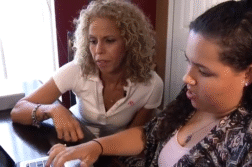ORLANDO, FL (Ivanhoe Newswire) — More than 795 thousand people will suffer a stroke this year. That’s one every 40 seconds. Every three minutes someone dies of it. Knowing the signs of stroke could save your life. But did you know the signs are different between men and women? Knowing what to watch out for could mean the difference between life and death. Stroke awareness
Krysta Owings, Stroke Survivor says, “Woke up and started having, you know, some blurry vision, little bit of balance issues.”
Krysta’s’’ stroke symptoms were not the typical ones such as numbness, slurred speech, and droopy face. But what Krysta experienced are common signs of stroke in women.
Gregory Zipfel, MD, Neurosurgeon at Washington University in St. Louis says, “You can have a stroke, but it’s not as clear cut that it’s a stroke.”
For women, the red flags include loss of consciousness or fainting, general weakness, confusion, unresponsiveness, or disorientation. Nausea, vomiting and even hiccups can also be signs. Another surprising symptom — sudden behavioral changes, including agitation and hallucinations.
Doctor Aipfel explains, “So location in size of where the event occurs can impact the types of symptoms patients have.”
Sixty percent of US stroke deaths occur in women. The best outcomes are seen in patients who are treated within three hours of the symptoms emerging. That’s why knowing these subtle signs of stroke for women could mean the difference between life and death.
There are many reasons women are at greater risk of a stroke compared to men. High blood pressure, high cholesterol, smoking, obesity and diabetes are the leading causes of stroke. The CDC reports one in three US adults has at least one of these risk factors. Also, birth control pills and hormone replacement therapy can both contribute to high blood pressure, increasing the risk of a stroke.
Sources:
Contributors to this news report include: Marsha Lewis, Producer; Roque Correa, Editor.
To receive a free weekly email on Smart Living from Ivanhoe, sign up at: http://www.ivanhoe.com/ftk



